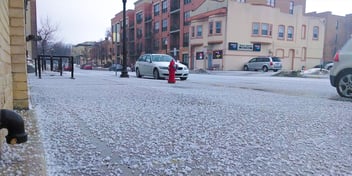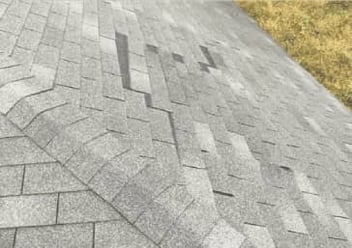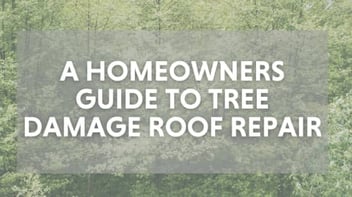- Home »
- Learningcenter »
- Getting back to normal after storm damage
Getting Back to Normal After Storm Damage
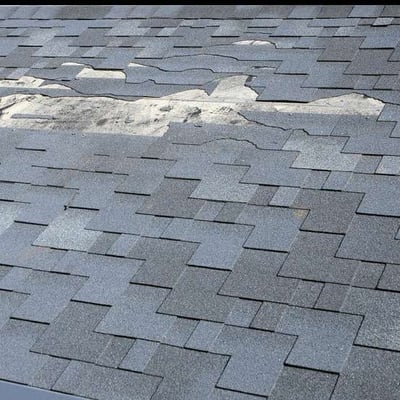
Once the storm has passed
If you have ever experienced roof storm damage here in Atlanta, you know what it is like to deal with the aftermath. There is so much to be done, some of it is urgent, some isn’t, and the concerns are as endless as the questions. The biggest question of all and the most important is “What to do after storm damage to your home?”.
If there is storm damage on home, it will feel like the world has turned upside down and wrong side out. Observing the destruction left behind, especially roof storm damage, can be overwhelming. It isn’t unusual for homeowners to be unsure what steps to take, so we offer 5 steps that can help you navigate through the chaos:
1) Be alert and safe
Serious injuries are waiting to happen among the destruction after any storm. Your first step should be to make sure everyone in your home is safe and take the steps needed to keep them safe. Watch for downed power lines, broken glass, and debris from roof storm damage and other types of damage. If there is gas smell, shut it off and call the gas company and 911 immediately.
2) Assess damage on home and take pictures
After everyone is safe and accounted for, walk around your home, and access the damage. Take notes and pictures before you call a contractor or your insurance company. As you inspect your home, check these things on the exterior and interior:
- The Roof. Check for holes and leaks in the roof, dented downspouts, gutters, and vents, leaning chimneys.
- The Siding. Check for damaged and missing siding. High winds and heavy rain can damage and loosen and tear off siding.
- Doors and Windows. The wind will blow debris around and through windows and doors, taking doors off their hinges.
- Your Appliances. There can be electrical and water damage, including the HVAC exterior portion and window units..
- Flooded Basement. Check the basement or crawlspace for flooding.
- Fire and Moisture. Electrical and water damage can result from storm damage.
Be sure to take notes and pictures of all the damage you find, including personal content and any detached structures that are covered on your homeowner’s policy.
3) Call the insurance company
After you have assessed everything and have pictures of all the exterior and interior damage including roof storm damage, call your agent or the company emergency claim line. They will ask questions, this is where your notes will come in handy, and then provide you a list of what will take place. Make notes of what they tell you, get the person’s name and direct dial or extension.
4) Prevent further damage
Now, you need to do what you can to keep any further damage from happening if you can do this safely. Cover up all the broken windows and doors with plywood and tarps. Cover any roof storm damage with tarps and wood. Call a roofing contractor for assistance if you can’t do this yourself. If your home is unsafe, stay with family, friends, or in a hotel until you can get your home livable.
5) Be organized and save receipts
Good thorough documentation is key when you start filing insurance claims. Make copies of all receipts so that you can be reimbursed. If you haven’t already, get familiar with your homeowner’s policy. The three scenarios your homeowner’s insurance should cover are:
- Weather damage
- Non-weather events
- Sudden/accidental events
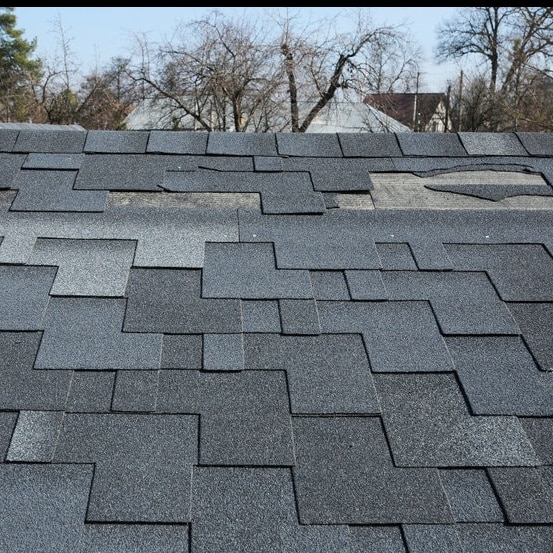
What if you’re a renter and not a homeowner?
Hopefully, you renter’s insurance! Then you need to follow the same steps we have outlined here for a homeowner, with a few exclusions. A rental home damage checklist for storm damage won’t include the exterior damage, that will be the property owner’s responsibility, unless your landlord is out of town. A landlord or property management should have provided you contact information in case of an emergency, reference your lease for steps you should take for property damage, including any roof storm damage.
Is storm damage covered by homeowners insurance?
Every homeowner’s and renter’s insurance policy different, but the following are common guidelines for property and roof storm damage losses:
- Hail, Wind, Fallen Trees
Roof storm damage caused by hail and wind, hard rains, heavy snow, for tree limbs and trees are largely covered by homeowner insurance policies. There may be limited tree removal coverage as well, if the tree landed on your home, not in the yard.
- Lightning Roof Storm Damage
Lightning strike that causes roof storm damage will typically be covered on most homeowner’s insurance policies. Any appliance and electronic damage caused by power surges are normally covered if the power surge was caused by a lightning strike. Any power surge that is from electrical issues off of your property won’t usually be covered unless you have a expansion rider added to your policy.
- Flood, Ice, and Water Damage
Water damage from heavy rains is typically covered as well as hailstones and ice roof storm damage and other property damage. There are limitations to water damage based on what caused the water damage.
What is not covered under homeowners insurance?
Each policy will vary, but most will not cover the following:
- Insect damage
- Termite damage
- Bird damage
- Rodent damage
General wear on a home, any mold, rot, or rust within your home will not be covered. Any damage from agricultural or industrial operations caused by smog or smoke is not covered. Any damage from poor construction or defects within a house that was covered up will not be covered.
Does homeowners insurance cover driveway damage?
It will depend on how and what damage was done. Driveways are usually covered under structure coverage for most homeowner’s insurance policies that provide financial loss coverage. Again, every policy is different, and it is important to get familiar with your policy ahead of needing it so you know how to approach your claim filing and if you need to upgrade your coverage.
Before your experience any property or roof storm damage, you need to ask yourself, “How can I protect my home from storms?” and then do the research, including asking your insurance company how to protect your home from storm damage. Some things you can do in the meantime are:
- Keep your roof repaired and cleaned
- Keep the siding repaired and cleaned
- Keep the gutters and downspouts clean and repair as needed
- Make sure your sump pump is working
- Keep the sealant on doors and windows in good condition
- Make sure all fences are in good condition
- Keep trees trimmed back from the house
Need help after the storm? Call us today at (678) 365-3138 for your roof storm damage repair
 Call (678) 365-3138
Call (678) 365-3138
